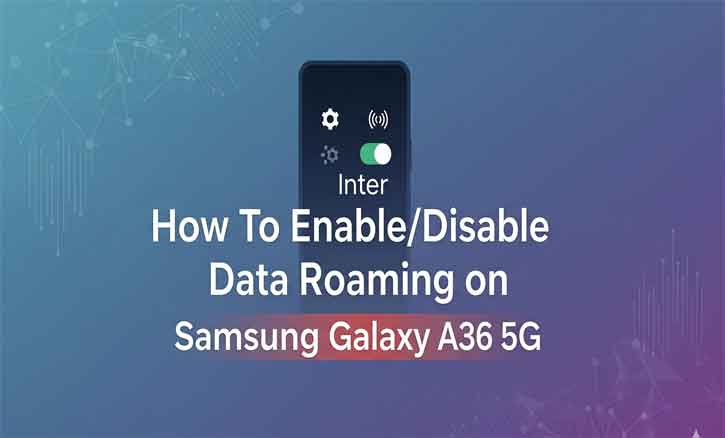
Data roaming can be a lifesaver when you travel abroad, but it can also become a source of unwanted charges if left unmanaged. If you own a Samsung Galaxy A36 5G, understanding how to enable or disable data roaming is essential. This not only helps you stay connected internationally but also gives you full control over your mobile expenses.
According to a 2021 study by the University of Oxford, roaming data charges remain one of the top contributors to unexpected phone bills for international travelers. Knowing how to control this feature on your smartphone ensures you won’t fall into that trap.
What is Data Roaming?
In simple terms, data roaming allows your phone to connect to networks outside your home carrier’s coverage area. This typically happens when you travel to another country. Your device will automatically search for a partner network to keep you connected to the internet.
While convenient, roaming often comes with higher charges. Carriers add extra costs because they pay foreign networks for access. A report from Stanford University (2020) found that international roaming data usage can increase monthly mobile bills by up to 45%.
Why Enable or Disable Data Roaming?
Reasons to Enable Data Roaming
- Stay connected when traveling abroad.
- Access mobile data where Wi-Fi is not available.
- Use essential apps like maps, messaging, or ride-sharing.
Reasons to Disable Data Roaming
- Prevent unexpected roaming charges.
- Reduce background data consumption from apps.
- Conserve battery life when abroad.
- Ensure more predictable monthly bills.
In short, enable roaming only when you need it. Otherwise, keep it off to avoid unnecessary costs.
Step-by-Step Guide: How to Enable/Disable Data Roaming on Samsung Galaxy A36 5G
Managing roaming settings on your Galaxy A36 5G is straightforward. Here’s how you can do it:
To Enable Data Roaming
- Open the Settings app.
- Tap Connections.
- Select Mobile Networks.
- Toggle Data Roaming to On.
To Disable Data Roaming
- Go to Settings.
- Open Connections > Mobile Networks.
- Toggle Data Roaming to Off.
That’s it — a simple switch gives you control over your data roaming status.
Common Issues and Troubleshooting
Sometimes enabling roaming doesn’t immediately work. Here are a few things you can try:
- Check with your carrier: Make sure international roaming is included in your plan.
- Restart your phone after enabling roaming.
- Reset network settings if roaming still doesn’t connect.
- Use manual network selection: Go to Mobile Networks > Network Operators and choose a local carrier manually.
Tips for Managing Data While Traveling
Even when roaming is enabled, you can still save data:
- Connect to Wi-Fi networks whenever possible.
- Download offline maps, music, or movies before leaving.
- Use a local SIM card or an eSIM for cheaper data plans.
- Enable Data Saver Mode in settings to reduce background usage.
Studies from the Massachusetts Institute of Technology (MIT, 2022) suggest that travelers who combine local SIM cards with roaming controls reduce mobile expenses by more than 50%.
Conclusion
Managing your mobile data while traveling doesn’t have to be complicated. By learning how to enable or disable data roaming on your Samsung Galaxy A36 5G, you gain control over your connectivity and expenses.
Whether you want to stay online abroad or avoid surprise charges, this setting is only a few taps away. Always remember: check your carrier’s roaming fees before traveling and use roaming only when absolutely necessary.
FAQ
1. Does enabling data roaming mean free internet abroad?
No. Data roaming connects you to foreign networks, but charges depend on your carrier’s agreements.
2. Will I be charged if data roaming is on but I don’t use data?
Most carriers only charge for actual data usage, but some may have daily roaming access fees. Always confirm with your provider.
3. Can I enable roaming only for certain apps?
No, roaming is a system-wide setting. However, you can restrict background data for specific apps.
4. Is roaming the same as international data?
Yes, in most cases roaming refers to international data usage when your home carrier’s network is unavailable.